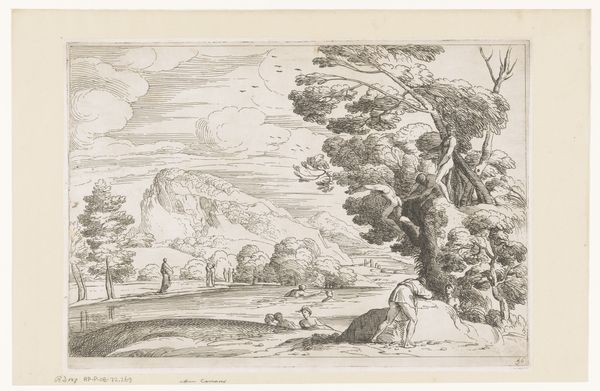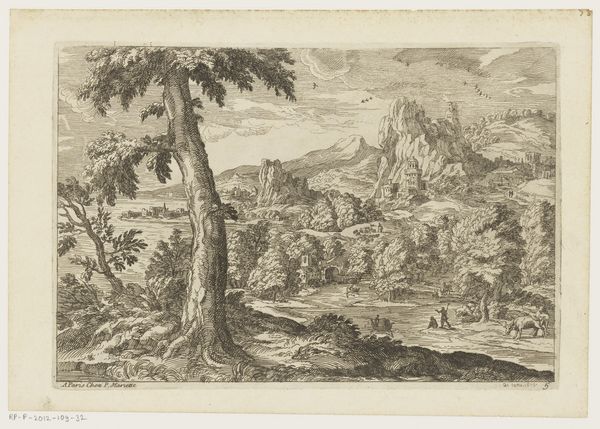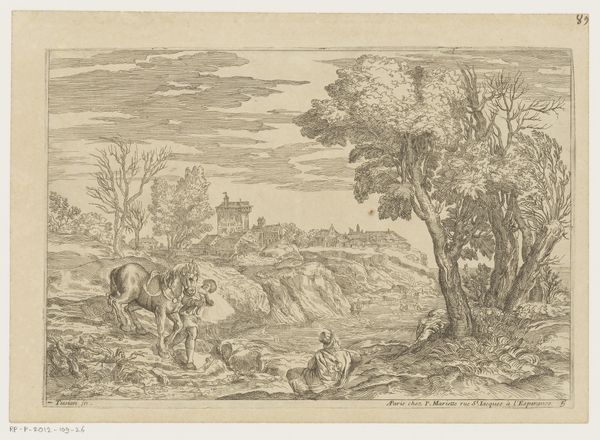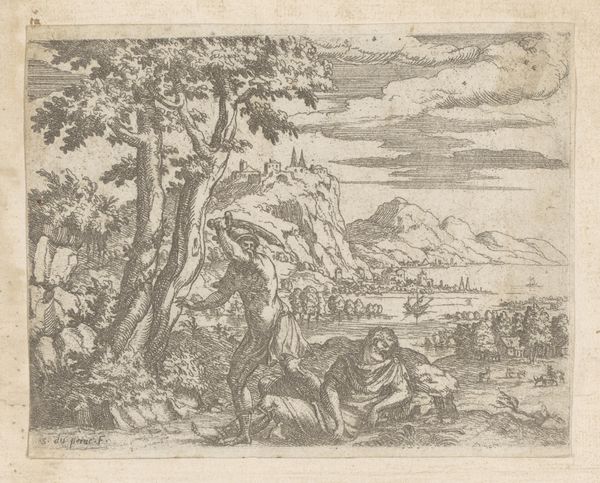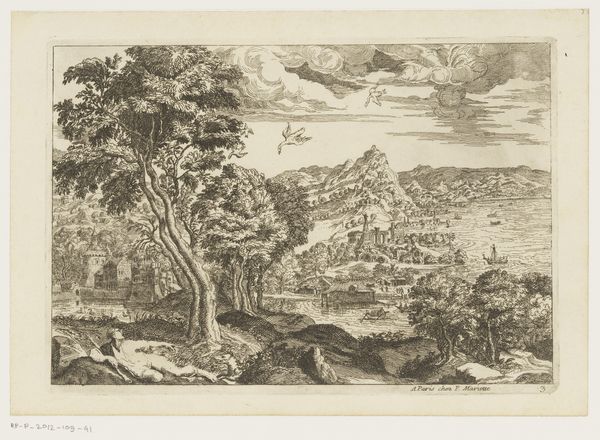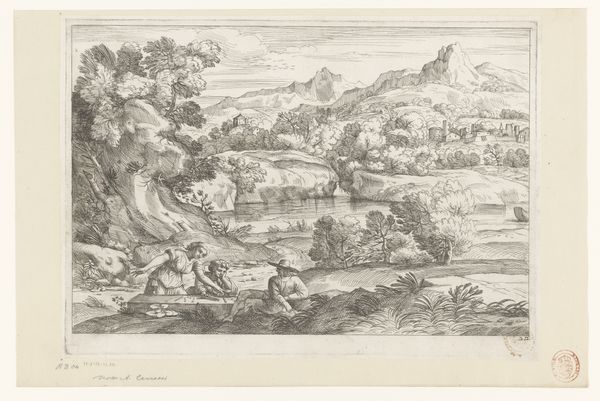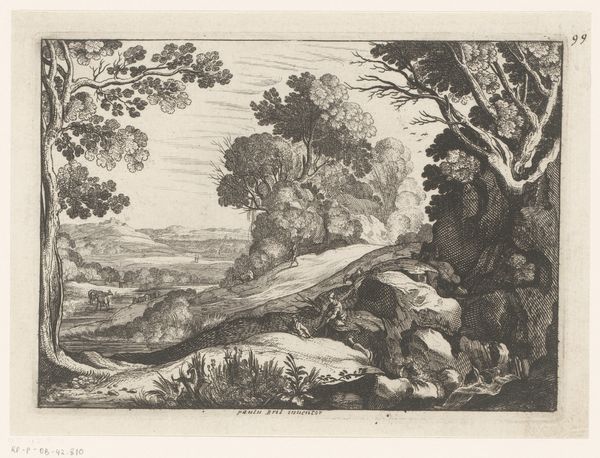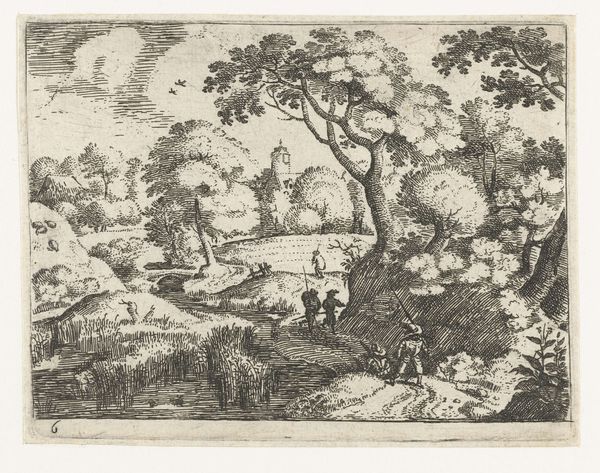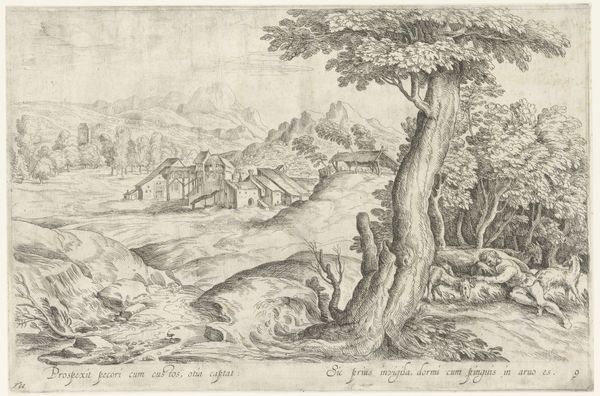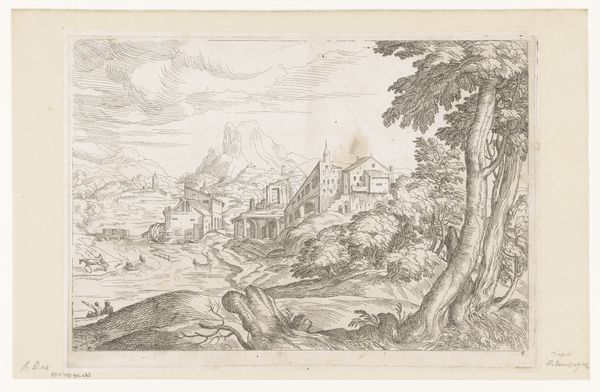
drawing, etching, intaglio, engraving
#
drawing
#
baroque
#
etching
#
intaglio
#
landscape
#
figuration
#
engraving
Dimensions: height 175 mm, width 252 mm
Copyright: Rijks Museum: Open Domain
Curator: Ah, the "Rivierlandschap met zogende sater," a baroque etching from sometime between 1663 and 1726, likely an intaglio print based on the deep grooves, though the precise origins of the plate remain a delightful mystery, wouldn't you say? Editor: It does have a charming mystery about it. My first impression is of contrast. The delicacy of the etched lines creates this expansive landscape, yet there's an intimacy suggested by the satyr nursing its young right up front. Curator: Yes, let’s unpack the satyr. That specific iconography invites consideration of cultural narratives about nature, fertility, and the wild. The satyr, typically a symbol of untamed passion, rendered here with a nurturing tenderness shifts our perception of nature itself. It asks if wildness can also be gentle and nurturing. Editor: Exactly! And looking at the larger composition, the fishing rod to the lower right introduces an element of labor, of daily sustenance drawn from the river’s bounty. You see those two figures to the right as well. What is the importance of integrating people in nature in this way? How does that relationship express hierarchy and control over nature, its material exploitation? Curator: Indeed! Beyond mere documentation, it invokes the timeless, almost Arcadian themes prevalent during the Baroque. Consider how such idyllic representations served sociopolitical ends, projecting fantasies of wealth through harmonious landscapes. Editor: Note too the city in the background. It gives such visual weight, particularly relative to that small nursing satyr, that one can’t help but consider whether its rise depended upon suppressing natural landscapes. It would suggest an entire market network for artworks just like this. What material realities did that entail for artisans in the print trade? Curator: Precisely! These subtle elements echo in art history over centuries! Seeing it as material exposes what ideology and structures truly dictate culture, especially back then! The availability of engraving itself suggests complex manufacturing and consumption chains. Editor: A wonderful conversation about symbolism, material conditions, production, and so on, but to pull us back from there, let us recognize the capacity of symbols for meaning and cultural memory within the context of those socioeconomic relations that art exists within. It suggests so much about our own relationship with the natural world and what value society imposes on it! Curator: Well said!
Comments
No comments
Be the first to comment and join the conversation on the ultimate creative platform.

